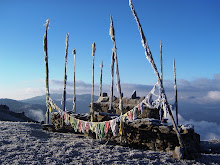Gordillo, Gaston. 2004. 2004 Landscapes of Devils: Tensions of Place and Memory in the Argentinean Chaco. Durham: Duke University Press.
Some insights from reading this really impressive and well written ethnography centered in the Argentinean Chaco and in the Toba but ultimately focusing on the multiplicities of contradictions, negotiations and denials that Argentina’s history present in relation to indigenous people, marginalized populations, uses and appropriation of resources, and the power of memory to struggle and the struggle for memory.
I recall an image which is my partner organizing the index of this book in one coffee shop we used to go, and how at the end, when the deadline was almost there, I also helped her to finished it. So, in a way I have an indirect marginal contribution to this book…
But going to the main things that attract my attention within it is the different forms of actions and one could say agency not only in relation to the Toba, the Anglican and other churches, the owners and workers of the Sugar plantations, the Argentinean State, the Army but also the non-humans actors: what Gordillo, Tobas and others call the devils. Here I would like to comment that in many ways these “devils” are no more than spirits, with powers to heal or do harm, to wisdom or un-memory, and Toba people navigate the relation with them in many different ways between selfishness and solidarity, scarcity and abundance. I do think that calling these spirits as devils produce different effects in different audiences. It is clear that the association spirits-devils comes from the Christianization of the Americas and the ideologies of the Catholic Church treating everything that was not their own religious ideology as source of the devil and evil. But my point here is that these devils can also be seen as the "weapons of the weak" using Scott's famous phrase. This is not only a landscape of devils, it is also a devilization of the social/natural landscapes. And the Toba, among many other socieites, used and keep using all the resources they have at hand to empower or challenge the extremely hursh conditions in which they were living.
I am going slightly out of the context of the book, but I think that types of discussion Gordillo opens in this book are somehow connected with the forms of appropriation of the past and the local knowledge of the physical and human environment. We can call these spirits whatever we want, Toba people call them as devils but ultimately we are defining their material symbolism and their efficacy in a realm of the western world that is very suspicious about these types of beings…I guess my point here is a discussion we have with some friends (included Gaston) between the tensions of historicizing or ahistoricizing the relationships between the “Toba” people and the “Argentinean State” and the diverse roles we give to the “Toba” people and the “Argentinean State” as the ultimate source of explanation/interpretation of the “real”… (We have this discussion in the class, and I still think that Gaston's book is very powerful but these entangled spaces could have been developed more in their "verticality" ("culture" or whatever we may call it) beside their "horizontality" (the spatial and historical relation between the Ingenios, the bush, the town and the missions), of course, there is no easy solution with this...)
The second point I would like to make is this. In Argentina, there is always a tension between the two major indigenous groups, the Toba in the north and the Mapuche in the south. Mapuche people have a totally different history in relation to confronting the State. The Argentinean State attacked them, dispersed them, gave children and women to the national elites as house workers and sent the men to the Army. The Argentinean Army even came 70 years before the Nazi Germany and put the Mapuche people in concentration camps and made them walk for hundred of kilometers, killing thousands in those actions. But although the Toba people were always considered as a people of indomitable warriors, after the missionarization, and even today, they are considered as more submissive than the Mapuche. If one looks at the more than 50 pictures that Gordillo’s book have, one would fine that more than 50% of them show a Toba (usually) men with a rifle or a machete in their hands. It is true they are hunters, and they use these weapons to kill animals, but one could also argue that some of the mixed feelings and contradictions criollo and white people have with the Toba is their fear that they may possible use their weapons and their skills and local knowledge against them. I do not know if this portray of Toba people with weapons has been deliberated or not. But this is something that struck me most. And I think it says a lot about the constant relationship Toba men have to have with their neighbors, the State and the non-human beings.
Querido diario
Hace 1 día.


No hay comentarios.:
Publicar un comentario